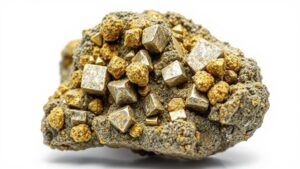Using Rock Color Indicators to Locate Gold-Bearing Quartz
Using Rock Color Indicators to Locate Gold-Bearing Quartz
The quest for gold has captivated humanity for centuries, driving exploration, mining, and economic booms. While traditional methods of gold prospecting often rely on physical sampling and geological surveys, the use of rock color indicators has emerged as a valuable tool in the identification of gold-bearing quartz. This article delves into the intersection of mineralogy, geology, and practical prospecting techniques represented by color analysis in rocks, specifically focusing on how color can guide prospectors to potential gold deposits.
The Importance of Geological Context
Gold is typically found in quartz veins, which are often the result of hydrothermal activity. Understanding the geological context of these formations is essential for effective prospecting. Generally, gold-bearing quartz veins are associated with specific types of rock formations, including metamorphic and igneous rocks. These rocks display various color variations that can be indicative of their mineral content.
- Igneous rocks, such as granite, may appear pinkish or reddish, often indicating feldspar content.
- Metamorphic rocks, such as schist, often show layered patterns with a range of dark and light colors suggesting different mineral assemblages.
Color Indicators of Gold-Bearing Quartz
Different colors in rock can point to the presence of specific minerals and materials that are often co-located with gold. For example, the color yellow and hues of orange in rock formations may indicate the presence of iron oxide minerals, which are commonly found in gold-bearing deposits.
Research has shown that areas with the following color indicators often yield higher gold concentrations:
- White to Gray Quartz: This is typically indicative of silicification, an important process in the formation of gold-bearing deposits.
- Reddish Stains: Iron and manganese oxides often give rock a reddish tint; these colors suggest potential mineralization sites.
- Greenish Hues: Presence of chlorite associated with metamorphosed volcanic rocks can indicate proximity to gold.
Real-World Applications: Case Studies
Numerous case studies illustrate the practical applications of rock color indicators in gold prospecting. One prominent example is the Victoria Gold Corps Eagle Gold Mine in the Yukon, where geologists utilized colorimetric analysis of surface rocks. Their findings indicated that red and orange-stained rocks corresponded to higher presence of gold in adjacent sub-surface quartz veins. This led to targeted drilling, significantly enhancing the yield of gold extraction.
Also, the historic Klondike Gold Rush showcases the practical application of color indicators. Prospectors often relied on the coloration of exposed rock faces to identify productive claims, leading to the discovery of significant gold deposits by focusing on specific color variations in the surrounding geology.
Potential Questions and Concerns
It is essential to address potential concerns regarding the reliability of color as a sole indicator for gold presence. Color can be influenced by various environmental factors and may not always directly correlate with gold-bearing quartz. efore, rock color analysis should be one tool among many, including geochemical analysis, structural geology assessments, and comprehensive geological mapping.
Another critical point of consideration is the variability of rock color due to weathering and erosion processes, which may falsely indicate the potential for gold mineralization. Prospectors are encouraged to complement color-based observations with additional methodological approaches such as assay testing and field surveys.
Actionable Takeaways
For prospectors aiming to enhance their gold exploration efforts through the use of rock color indicators, here are a few actionable strategies:
- Familiarize yourself with local geological maps to understand typical rock types and colors associated with gold deposition.
- Carry out preliminary field observations by documenting rock colors and correlating them to known mineralization patterns.
- Use portable assay testing to confirm the presence of gold in areas indicated by color analysis.
To wrap up, utilizing rock color indicators offers a scientifically grounded, practical approach to locating gold-bearing quartz. By integrating color analysis with established geological practices, prospectors can significantly improve their chances of discovering valuable mineral deposits.



